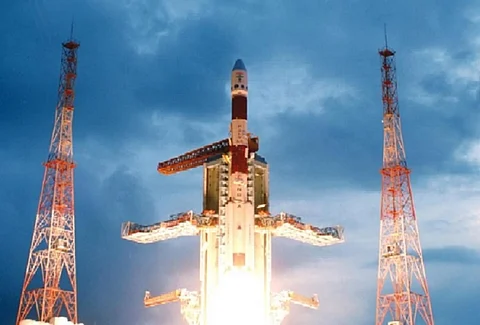

Just a few days remain for anticipated launch of Chandrayaan-2 from Sriharikota, India’s most ambitious mission to the moon yet. The Rs 1000-crore mission is set to carry an orbiter, a lander named ‘Vikram’ and a moon rover christened ‘Pragyan.'
The most exciting part of this mission is the country’s first attempted soft landing on a heavenly body. If carried out successfully, this will put India on the map as the fourth country to have made a soft landing on the moon after the United States, the former Soviet Union and China.
To understand just how far India has come with Chandrayaan-2, here’s a look at its predecessor, Chandrayaan-1, India’s first mission to the moon launched in 2008, and what it achieved.
India’s first Mission to Moon
The idea of carrying out a scientific mission to the moon was mooted at an Indian Academy of Sciences meeting in 1999. In the following years, this was followed by the constitution of a National Lunar Task Force by ISRO. But it wasn’t until November 2003 that the Indian government approved the first Indian Moon Mission, called Chandrayaan-1.
Subsequently, on October 22, 2008, India launched the 1380-kilogram spacecraft in a PSLV (Polar Satellite Launch Vehicle) C11 rocket, an XL variant of the launcher, from the Satish Dhawan Space Centre at Sriharikota. The Chandrayaan-2, by comparison, will be launched on GSLV (Geosynchronous Satellite Launch Vehicle) Mk III, which is a much more powerful launcher, and can launch a heavier payload further into space.
PSLV-C11 Lift Off
Chandrayaan-1 carried 11 scientific instruments built in India, USA, UK, Germany, Sweden and Bulgaria.
India’s first lunar mission costed Rs 386 crore or $80 million, which was a fraction of the cost of what other countries had spent. For example, China spent about $180 million for its lunar mission in 2007 and NASA's Lunar Reconnaissance Orbiter and Lunar Crater Observation and Sensing Satellite (LCROSS) reportedly cost $583 million. ISRO has consistently managed to keep its costs down by using indigenous components and materials in its spacecrafts, and also keep a vigil on each stage of the vehicle’s development, avoiding wastage of products.
While the mission’s duration was supposed to be two years, it was terminated early, in 10 months and six days. However, ISRO termed Chandrayaan 1 a success because it had managed to achieve most of its objectives.
What Chandrayaan-1 achieved
Chandrayaan-1 orbited the moon a distance of 100 kilometres from its surface, with a mission of chemical, mineralogical and photo-geologic mapping of the lunar satellite. The most significant achievement was its discovery of the presence of water on the Moon.
This discovery was made after the Moon Impact Probe detached from the orbiting spacecraft and hard landed on the moon’s surface at a pre-designated point. The Probe detected water in vapour form in trace amounts on the moon. “Chandrayaan-1 data showed evidence for water in the exosphere of Moon, on the surface of Moon and also sub-surface (tens of meters deep),” ISRO says.
Readying Chandrayaan-1 spacecraft for Thermovac test
According to Dr M Annadurai, who was the project director of Chandrayaan-1 and also worked on Chandrayaan-2, the latter is a “logical extension” of its predecessor. Chandrayaan-2 aims to land on south pole of the moon, which is also more likely to host water as it mostly in the shadow region, meaning, it does not get sunlight. “Water is expected from primordial origin (3-4 billion years ago) which remained preserved due to the unique geometry of solar illumination which prevents direct sunlight from entering craters in polar regions,” ISRO believes.
Fully integrated Chandrayaan-1 spacecraft (left) and loading it to Thermovac Chamber (right)
The discovery of water could be crucial, as it determines whether the Moon could be a rendezvous point having base materials for fuel, oxygen and the like, for missions that aim to go further than the lunar body. If the moon could be a pit stop for these resources, space travel could become more affordable.
Apart from this crucial discovery, the Chandrayaan orbiter also analysed the dust from the moon’s surface where is crash landed. Presence of iron in the lunar soil was confirmed through the moon mineralogy mapper, which was NASA’s instrument carried aboard Chandrayaan-1. Further, incidence of magnesium and iron in lunar rocks indicated that the moon was likely covered by molten magma in its history, and is a crucial part of understanding the moon’s composition and how it formed.
Early termination of Chandrayaan-1
The two-year mission was cut short because the spacecraft lost contact with ISRO in August 29, 2009, 312 days after it began its polar orbit of the moon.
Dr M Annadurai told Indian Express that while they initially thought that external heat had caused Chandrayaan-1 to malfunction and lose contact with ISRO, it was later found that there was an issue with of one of the imported dc/dc converters used in the vehicle – meaning that the heat generation and consequent malfunction was internal.
This problem was corrected in the Mangalyaan orbiter – India’s mission to Mars, in the planet's orbit since 2014 – where the imported converters were replaced with indigenous ones. Dr Annadurai said that they had learnt from first moon mission, and had implemented those learnings into Chandrayaan-2.
The ‘lost’ Chandrayaan-1 was found in 2017 by NASA. The latter’s Jet Propulsion Laboratory spotted India’s first lunar orbiter using its interplanetary radar technology, eight years after it lost radio contact with ISRO, still circling the moon.